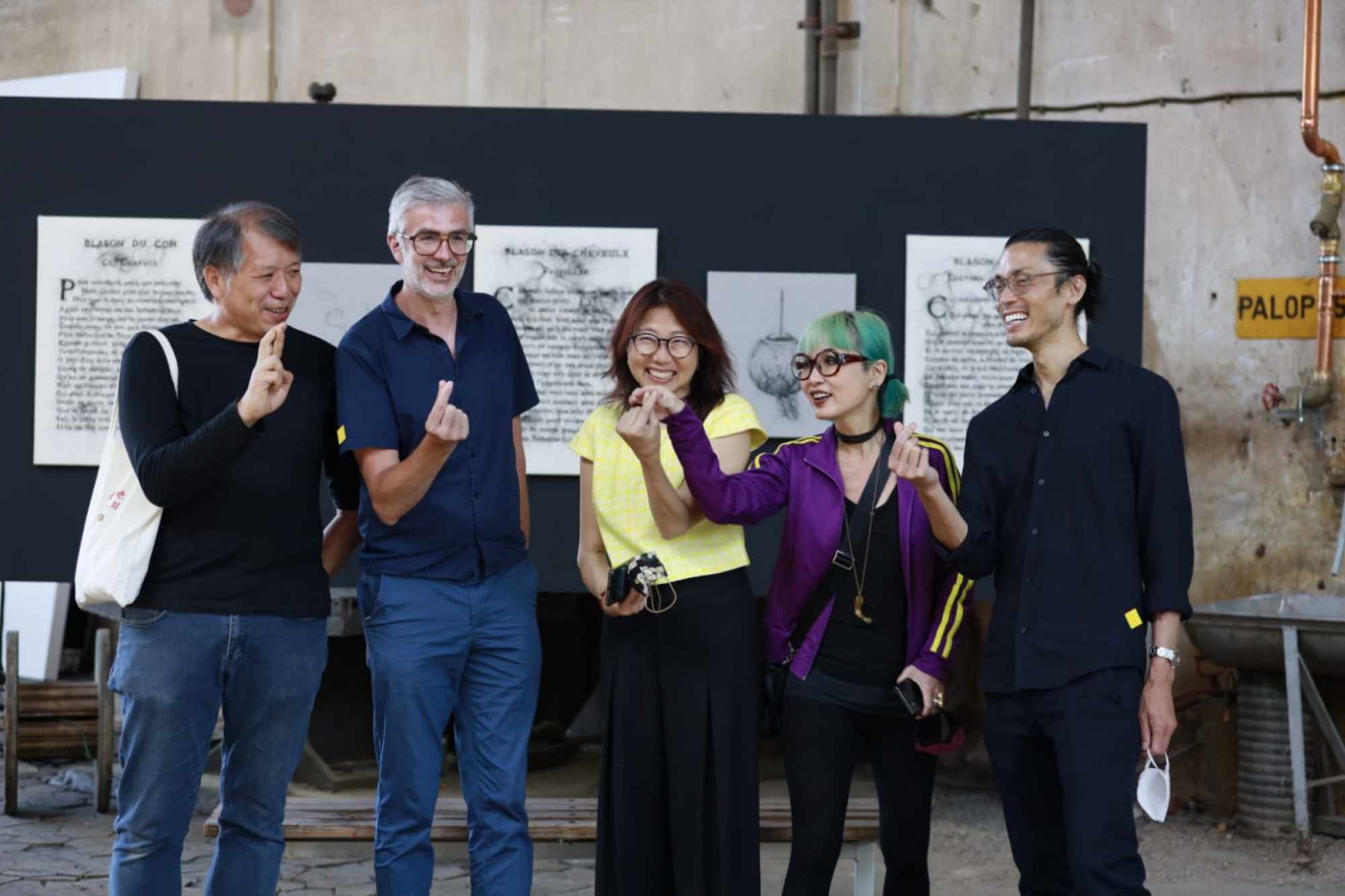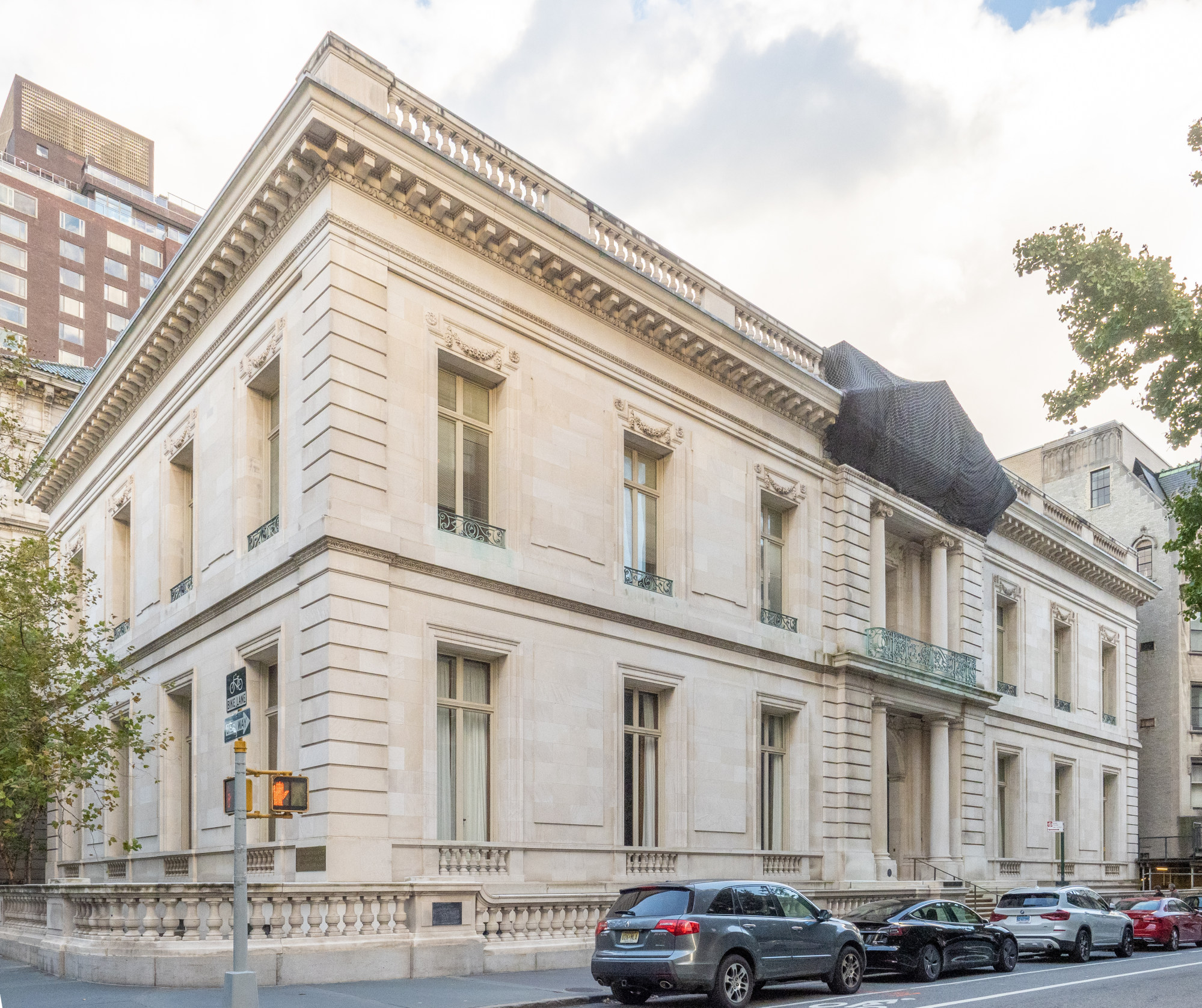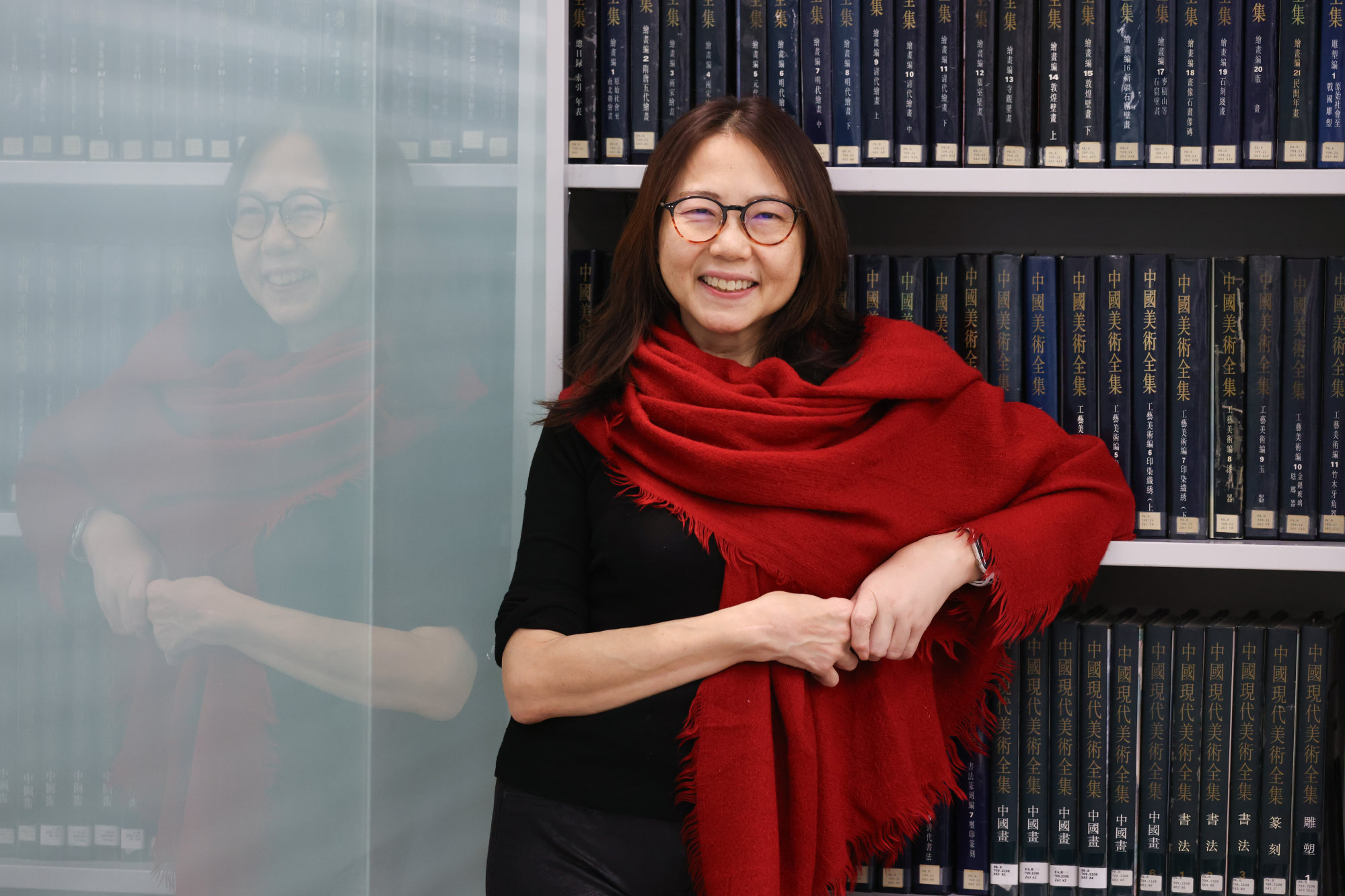“I had to look at why the students didn’t want to do Chinese art,” Koon says. “They thought of it as old-fashioned. They didn’t see the value because their history classes when they were younger were their least favourite. There was a lot of rote learning.”

Back then she had just 15 students in her senior classes. Today they are at full capacity of 40. The first-year courses which then had 20 students are now at 180.
That increase follows the trajectory of art in Hong Kong – now the third largest art market in the world – but it’s also in large part down to Koon’s engaging personality.
‘A new view of the city’: US artist’s film of Hong Kong, star of M+ facade
‘A new view of the city’: US artist’s film of Hong Kong, star of M+ facade
She has the sharp intellect of a scholar who spent a decade honing her craft in postgraduate research, and an easy sense of fun that allows her to deliver fresh content that educates and entertains.
In 2020, she received HKU’s Outstanding Teacher Award and the following year she picked up the prestigious Teaching Award from the University Grants Committee, given to the most outstanding teacher in the universities of Hong Kong. Little wonder her classes are full, but her early years at HKU were not all rosy.
As a professor in her early thirties, she fielded comments about whether she looked old enough to be a professor, how she dressed and even that she was using her hands too much when she spoke.

“It took a lot of mental strength to accept that I am who I am. I used to joke that feminism had skipped Hong Kong,” she says.
Her other bugbear at the time was the often-heard platitude “Hong Kong is a cultural desert”.
“I thought it was an easy phrase to toss out,” she says. “You had to be more active and engaged to find where interesting art was being made. Unlike London or New York, where it’s on your doorstep, Hong Kong took more work, and in doing that work it became more interesting as a place.”

Born in Hong Kong, Koon lived in Yuen Long, in the city’s New Territories, and moved to the UK with her family when she was six, growing up in Holloway, North London.
She knew from an early age she wanted to be in a creative field. Her parents weren’t keen on her studying fine arts, so they compromised on textiles – the family was in the textiles business – and she went to Loughborough University in the English Midlands.
In her second year at Loughborough, she became unwell with an unknown illness that manifested in chronic arthritis, terrible hives, and significant weight and hair loss. She was in and out of hospital for some time.

Unable to do the physically demanding work required of her original course, she had to rethink her direction and settled on Asian art history at the School of Oriental and African Studies University of London (SOAS).
Back in London and near her family, she recuperated and excelled in her degree, earning a first and offers of scholarships for postgraduate study. In 1996, she moved to the United States to study at the Institute of Fine Arts, New York University (IFA).
Housed in a grand mansion at the corner of New York City’s 5th Avenue and 78th Street – a gift to the university by a wealthy family – the institute has an imposing marble staircase and classes are held in the former ballroom.
Ill at ease until he found Finland, Hong Kong artist ponders idea of home
Ill at ease until he found Finland, Hong Kong artist ponders idea of home
“The place was full of people doing PhDs and MAs. There were a lot of Chanel suits around,” Koon says.
“A lot of my adjustment was trying to adjust to these social worlds which I wasn’t expecting to be in. I thought it would all be about studying, but it was as much as trying to understand people from different walks of life. It was interesting because it showed me how they saw the world and saw art.”
Koon was there for 10 years, completing her masters and then PhD and taking classes at Columbia University and Princeton University as well as the IFA.

She didn’t see herself so much as a student as an apprentice training to be the best scholar she could be.
“When you do Chinese art, you have to learn literature and philosophy,” she says, “I had a very demanding professor who really pushed us through the wringer. It was an intensely rich experience.”
It was her professor, the Chinese art historian Jonathan Hay, who put her forward for the job at HKU, which is how she found herself back in Hong Kong in 2005.
‘I had to start at the bottom’ – now she’s teaching America about Chinese art
‘I had to start at the bottom’ – now she’s teaching America about Chinese art
She didn’t buy the “cultural desert” label and it was her efforts to dig deeper and find out where the art was being made and who was making it that finally made her feel connected to the city.
“When I first arrived, that world of collectors and scholars was more conservative than I was used to,” she says.
“I often felt that as an Asian woman, despite being an intelligent Asian woman, that I was seen as a woman first before I was seen as a scholar among this community and that didn’t sit well with me. I found I needed to find other places to be more intellectually challenged outside of the university and I found this in contemporary art and Hong Kong art.”

The bilingual arts magazine Muse launched in 2007, founded by a former senior executive at Newsweek Magazine, Frank Proctor. Koon became a regular contributor, giving her an entry into the local scene and the opportunity to talk to artists.
“I’d never talked to a living artist in this way,” she says. “It offered me a way into looking at artists and to try to figure out what they are saying by their artwork.”
In her almost 20-year career in Hong Kong, she has witnessed huge changes in the kind of art, cultural institutions and people coming to Hong Kong.

The changes were gradual, driven by the art market, but they opened up the field for more funding and greater possibilities for non-profit organisations to do interesting work.
“None of my students knew what a curator did when I first started out and now many of my students want to be curators,” she says. “That is how big the leap has been.”

Her decision to take on the project – to explore how an artist could bring such joy and happiness to a diverse group of people – says much about Koon herself, unafraid to break the traditional academic mould.
“He’s done it for over 40 years, and anyone who can do that, you can’t just look at him in terms of money – you have to realise he’s doing something in his career,” she says. “That’s why I did it, plus I like him, I think he’s a nice guy.”

Having published Yoshitomo Nara in 2020, Koon is now preparing her next book project, which she intends to be more historical.
Meanwhile, she continues building bridges between academia and the arts community, while getting huge satisfaction from running into a growing number of former students who are now working in galleries, auction houses and museums.
“I feel I’ve made a powerful difference in the lives of students,” Koon says, “whereas I don’t know if I would have had the same impact if I was teaching elsewhere, simply because I’m here at a moment in Hong Kong where there is so much change happening in the cultural world and because Hong Kong is a smaller place.”

